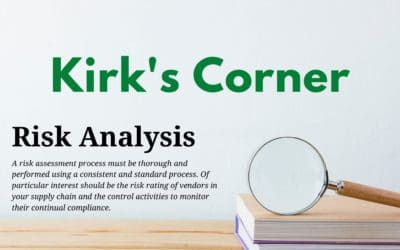
Introduction
As the commercial cannabis industry continues to expand and evolve, it becomes more difficult to understand medical and adult use issues across global jurisdictions. Some countries have chosen to legalize cannabis at the federal level, while others have left it explicitly to the states, provinces, or territories to manage independently. It may feel as if you are forced to become an expert in the ever-changing regulatory environment in addition to completing daily tasks. Understanding the differences in cannabis law and policy across jurisdictions is paramount if you want to expand into different areas while managing risk efficiently.
Evaluating the history of cannabis legalization and decriminalization across multiple regions is an appropriate step towards understanding potential risk areas unique to a commercial cannabis business, such as money laundering, illicit cannabis market, compliance, supply chain, and operational risks. By identifying consistencies between jurisdictions, we can learn from the larger group to identify best practices. Where there are inconsistencies, we can identify larger public policy changes that might benefit our individual markets. Finally, commercial cannabis will likely become a global commodity. Understanding best practices and material regional differences will reduce the risk of the import/export function by maintaining public safety and reducing public harm while still providing a cost-effective cannabis product.
While the legal and regulatory environment varies across the region of North America, this article will provide a brief introduction to the legal background on adult-use and medical use in Canada and the United States and evaluate where key regional similarities exist for the prevention of distribution to minors.
Legal Background: Canada and the United States
As of March 2020, the following U.S. states have approved adult and medical cannabis use: Alaska, California, Colorado, District of Columbia (DC), Illinois, Maine, Massachusetts, Michigan, Nevada, Oregon, Vermont, and Washington, as well as the U.S. territory of Guam. Montana, Utah, Arizona, New Mexico, North Dakota, Minnesota, Oklahoma, Missouri, Arkansas, Louisiana, Ohio, Pennsylvania, West Virginia, Florida, New York, Maryland, Delaware, New Jersey, Connecticut, Rhode Island, Hawaii, and New Hampshire, as well as the U.S. Virgin Islands and the U.S. territory of Puerto Rico have approved medical cannabis use. (National Conference of State Legislatures 2020) Additionally, 22 states and DC have decriminalized nominal amounts of cannabis, generally meaning that small, personal consumption amounts are not a state crime, but rather a civil or local infraction. (Alexander Campbell King Law Library, n.d.) The amount of cannabis that adults can possess varies by state and territory.
In 2018, Canada became the first G7 country to legalize cannabis with the enactment of the Cannabis Act. The Act aims to accomplish three specific goals: keep cannabis out of the hands of youth, keep profits out of the pockets of criminals, and protect public health and safety by allowing adults access to legal cannabis. (Canada Department of Justice 2019) Possession limits in the Act are based on dried cannabis amounts, and adults may possess in public up to 30 grams (slightly over 1 ounce) of legal dried cannabis, or a non-dried equivalent. (Canada Department of Justice 2019)
While cannabis remains a Schedule I Controlled Substance and therefore illegal at the federal level in the U.S., each individual state and territory (with the exception of four states) has passed its legislation to allow for medical and/or adult cannabis use. Conversely, while cannabis is legal at the federal level in Canada, the model closely follows the U.S. in that the Canadian government chose to give broad oversight to the individual provinces, allowing each region to set many of its regulations. (The Cannabis Investor 2019) Each U.S. state is already used to managing the intricacies of its own legal and regulatory environment for commercial cannabis.
Protecting Minors – Key Similarities in Both Markets
The Cannabis Act has explicit rules for the packaging and labeling of cannabis products to ensure that they do not take on an appearance of something that might be enticing or appealing to young persons. The Cannabis Act is particular in terms of restricting promotion or enticement. It is prohibited to sell cannabis in a package or with a label that “associates the cannabis or one of its brand elements with, or evokes a positive or negative emotion about or image of, a way of life such as one that includes glamour, recreation, excitement, vitality, risk or daring.” (Government of Canada 2020) The rules are comparable in the U.S., even if they vary slightly by state law. As of January 2020, all cannabis product packaging must be child-resistant per parameters set by the Consumer Product and Safety Commission. Child-resistant packaging must include proof of strict third-party testing to ensure that the packaging can prevent child access. (Weed 2019)
One situation where both jurisdictions can learn from each other’s mistakes occurred in 2020. A raffle held at a Canadian youth hockey tournament contained a prize consisting of several cannabis products. The winner was an eight-year-old boy who was participating in the tournament. Not only did this result in significant negative news for the tournament organization, but for the cannabis industry, which already faces scrutiny for perceived marketing to children. Even though no cannabis organization was directly involved in the tournament or the raffle, reputational damage has been done to the industry, and the situation is likely to result in increased regulations. Clearly, an eight-year-old was not intended to win the drawing, but the case can be made for negligent exposure in an area frequented by minors- a law present in almost every jurisdiction where cannabis is legal. (Mathews, 2020)
Integrating mistakes like this into your risk assessment can give you insight into activities you might already be conducting or considering. In this case, knowing that raffles have a less controllable outcome, you may consider many different types of risk mitigations to reduce the likelihood that your products end up in a similar context. For example, if an employee becomes aware of the potential that your cannabis products will be used in a give away, training your front-line staff to educate customers of the potential risks. Regardless of your risk mitigation activity, knowing that this risk exists allows you to consider your specific commercial cannabis business’s needs and demonstrate your strong risk management.
Conclusion
Understanding the history of cannabis legalization and decriminalization across multiple regions is a helpful step towards understanding potential risk areas unique to a commercial cannabis business, such as the compliance risk of marketing cannabis products to minors. While the legal and regulatory environment varies across North America, Canada and the U.S. closely mirror each other. Both countries have stringent packaging and labeling requirements to ensure that children are protected. Monitoring for reputational and monetary exposure in both jurisdictions reduces the chances that your business is unaware of unique challenges in the industry.
ID Proofing: The Key to Running a Successful Dispensary (intellicheck.com)
ACCCE stays informed of the ever-changing regulatory environment to ensure its members are aware of new standards and best practices. We are committed to creating a forum for like-minded professionals in the commercial cannabis industry to interact by exchanging ideas and sharing commentary on the industry’s most relevant topics related to risk management. We provide resources and articles on emerging trends, red flags, risk issues, and history of the commercial cannabis industry. We welcome our members’ feedback on topics we present. Please contact us at [email protected].



